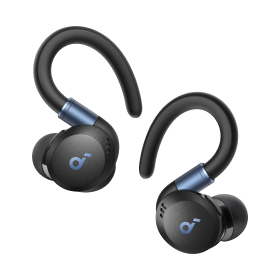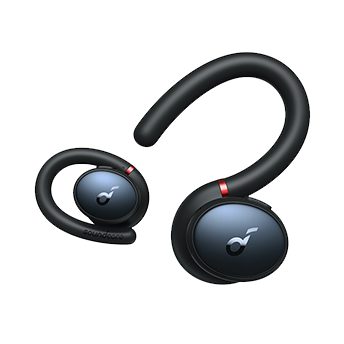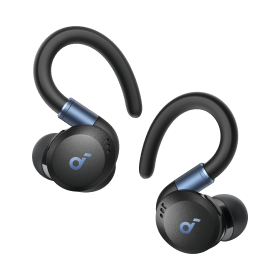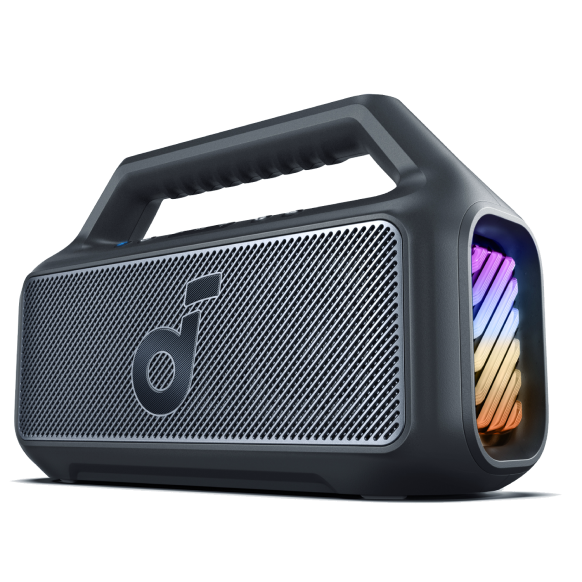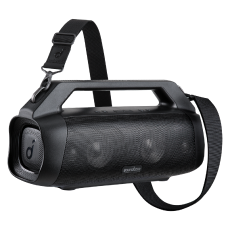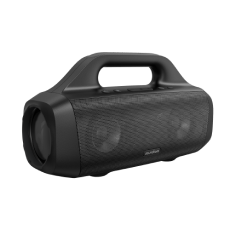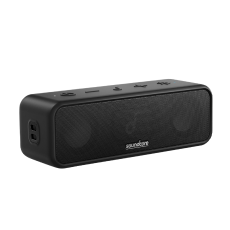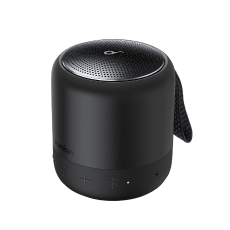Spatial Audio and Dolby Atmos have recently become the focal point of discussions among audiophiles and tech enthusiasts alike. These audio technologies promise to transform the way we experience sound, enveloping us in a more immersive auditory landscape than ever before. But what exactly are these technologies, and how do they differ from one another? Moreover, is one superior to the other? This guide delves into the intricacies of Spatial Audio vs Dolby Atmos, dissecting their definitions, differences, and determining which technology might hold the edge in enhancing our listening experience. Let's dive in!

What is Spatial Audio?
Spatial audio is an advanced sound technology designed to create a more immersive 360-degree audio experience that mimics the way we perceive sounds in the real world. Unlike traditional stereo sound, which is limited to a left and right channel, Spatial Audio introduces the element of space into the listening experience, allowing sounds to be perceived as coming from above, below, and all around the listener.
Spatial Audio achieves this immersive effect by leveraging advanced audio techniques such as binaural recording, which employs two microphones to capture sound just as it would be heard by the human ears, and object-based audio coding, which allows sound engineers to manipulate the placement and movement of sounds within a 3D space.
This technology is often used in various applications, including movies, music, video games, and virtual reality (VR) experiences, to enhance the realism and immersion of the audio. It also features head tracking in some devices with built-in motion sensors, such as headphones or earbuds, to adjust the audio in real-time based on the listener's orientation and movements, further enhancing the sense of presence and immersion.
What is Dolby Atmos?
At its core, Dolby Atmos is an innovative audio format that enables sound designers and engineers to place and move individual sounds anywhere in a room, including overhead, with astonishing precision, thereby enveloping the listener in a more immersive and realistic sound environment. Introduced by Dolby Laboratories, Dolby Atmos extends beyond the traditional 5.1 and 7.1 surround sound setups by incorporating height channels. These additional channels allow sound to be perceived as coming from above, adding a vertical dimension to the listening experience that was previously unattainable with conventional systems.
Dolby Atmos technology is powered by a sophisticated audio rendering engine that transforms traditional channel-based audio into a dynamic object-based soundscape. In this context, "objects" refer to individual sounds, such as a helicopter flying overhead or raindrops hitting the ground, which can be independently controlled and placed within the three-dimensional space.
The versatility of Dolby Atmos extends its application beyond cinema to home entertainment, gaming, and even mobile devices. With the advent of Atmos-enabled soundbars, home theater receivers, TV speakers, the immersive sound experience once limited to high-end theaters is now accessible in the comfort of one's living room. For gamers, Dolby Atmos offers a competitive edge by improving spatial awareness, allowing players to detect the direction of footsteps, gunfire, and other in-game sounds with greater accuracy. Meanwhile, smartphones and laptops equipped with Dolby Atmos technology deliver a more expansive and immersive audio experience, even through headphones.

Difference Between Spatial Audio and Dolby Atmos
While Spatial Audio and Dolby Atmos are both designed to enhance the listening experience by creating immersive, three-dimensional soundscapes, they differ in technology, compatibility, equipment requirements, and user experiences. Let's compare Dolby Atmos vs Spatial Audio in detail:
Technological Foundations
Spatial Audio: Spatial Audio is a broad term that encompasses various technologies aimed at creating a three-dimensional sound environment. It is not tied to a specific format or brand; instead, it represents an overarching principle applied across multiple platforms and devices, including virtual reality (VR) equipment, headphones, and home audio systems.
Dolby Atmos: Dolby Atmos on the other hand, is a specific type of audio format developed by Dolby Laboratories. It is an object-based audio technology that allows individual audio objects to be precisely positioned and moved in three-dimensional space, including the vertical axis to create an enveloping sound atmosphere.
Content and Compatibility
Spatial Audio: Spatial Audio can be applied to a wide range of audio content, enhancing stereo signals to give them a three-dimensional quality without the need for the content to be specifically mixed for Spatial Audio. This makes Spatial Audio a versatile option for upgrading the audio experience across diverse media.
Dolby Atmos: Dolby Atmos content, however, needs to be specifically mixed and encoded for the format to take advantage of the object-based sound placement. This means that while the selection of movies, games, and music available in Dolby Atmos is growing, it is more limited compared to content that can benefit from Spatial Audio processing.
Audio Equipment Requirements
Spatial Audio: Spatial Audio is designed to be highly adaptable, working across a range of devices from high-end headphones and single-unit spatial audio speakers like our soundcore Motion X500 to standard earbuds and built-in smartphones, tablets, and computers speakers. The technology's versatility is one of its strongest suits, making Spatial Audio accessible to a wide audience.
Dolby Atmos: In contrast, Dolby Atmos demands a more specialized setup to achieve its hallmark immersive sound. This includes Atmos-enabled speakers that can project sound vertically, AV receivers that decode Dolby Atmos content, and streaming devices that can support Dolby Atmos for digital content playback.
User Experience
Spatial Audio: Spatial Audio aims to create a natural and immersive sound experience, regardless of the listener's environment. It is particularly effective in personal listening scenarios, such as with spatial audio earbuds that support head tracking, providing a highly immersive experience as if the sound is coming from all around the listener, even in a two-dimensional plane.
Dolby Atmos: Dolby Atmos, while also immersive, is more focused on creating a detailed and dynamic soundscape in controlled environments like home theaters and cinemas. It excels in placing discrete sound objects in a three-dimensional field, making it ideal for film and gaming, where precision in sound placement can greatly enhance the narrative and immersive experience.
In essence, while both aim to envelop the listener in sound, Spatial Audio offers flexibility and broad application, making it suitable for personal listening through specialized spatial audio speakers, headphones, and mobile devices. Dolby Atmos emphasizes a more immersive, cinema-like experience with specific requirements for both content and audio equipment.

Is Spatial Audio Better Than Dolby Atmos?
The question of whether Spatial Audio or Dolby Atmos is better is not one of superiority, but rather of suitability—each technology excels in different aspects and caters to various preferences and scenarios. The choice between Spatial Audio and Dolby Atmos ultimately hinges on what you value most in your auditory experiences:
Spatial Audio for Personal and On-the-Go Listening
Spatial Audio is often praised for its adaptability and the personalized auditory experience it offers, especially with earbuds that support head tracking technology, like our soundcore Liberty 4. This technology is ideal for users who consume content across a variety of devices, including smartphones, tablets, and laptops, and seek an immersive experience without the need for a multi-speaker setup.

Dolby Atmos for Cinematic and Home Theater Enthusiasts
Dolby Atmos, with its object-based sound and height channels, is unparalleled in creating an enveloping, cinema-like experience in compatible home theaters and cinemas. It excels in environments where precision in sound placement enhances the narrative—such as in movies, TV shows, and gaming. If your primary consumption of audio content is through movies and home cinema, and you have or plan to invest in an Atmos-compatible speaker system, Dolby Atmos is likely the better choice.
FAQ
Is Dolby Atmos and Spatial Audio the same?
No, Dolby Atmos and Spatial Audio are related but distinct audio technologies. Dolby Atmos is a specific technology developed by Dolby Laboratories that adds height channels to traditional surround sound, creating a three-dimensional audio experience. Spatial Audio, however, refers more broadly to any technology that simulates 3D soundscapes, including Apple's implementation that enhances Dolby Atmos content for a more immersive experience.
What is required for Dolby Atmos?
To experience Dolby Atmos, you need content mixed in Dolby Atmos format, a playback device (like a smartphone, computer, or AV receiver) that supports Atmos decoding, and an appropriate audio system. This system can be an Atmos-enabled soundbar or speaker system, an AV receiver with overhead speakers, or even Atmos-supported headphones. Additionally, specific software or streaming apps capable of Dolby Atmos playback are necessary.
Is Spatial Audio like 3D audio?
Yes, spatial audio is similar to 3D audio. Both terms describe audio technologies designed to create a more immersive listening experience by simulating sound in three-dimensional space. This means that sounds can be perceived as coming from any direction around the listener, including above and below, which enhances the realism of movies, music, and video games.
Conclusion
Navigating the complex terrain of audio technology, particularly when comparing Spatial Audio vs Dolby Atmos, reveals a landscape rich with innovation and potential. Throughout this exploration, we've uncovered the essence of what makes each technology unique and their distinct differences. While Spatial Audio offers a more adaptable and device-agnostic approach, Dolby Atmos stands out for its precise sound object placement. The question of whether Spatial Audio is better than Dolby Atmos doesn't have a one-size-fits-all answer; it largely depends on your specific use cases and preferences. By staying informed and open to experiencing both technologies, you can find the perfect auditory experience that suits your personal taste and lifestyle.















